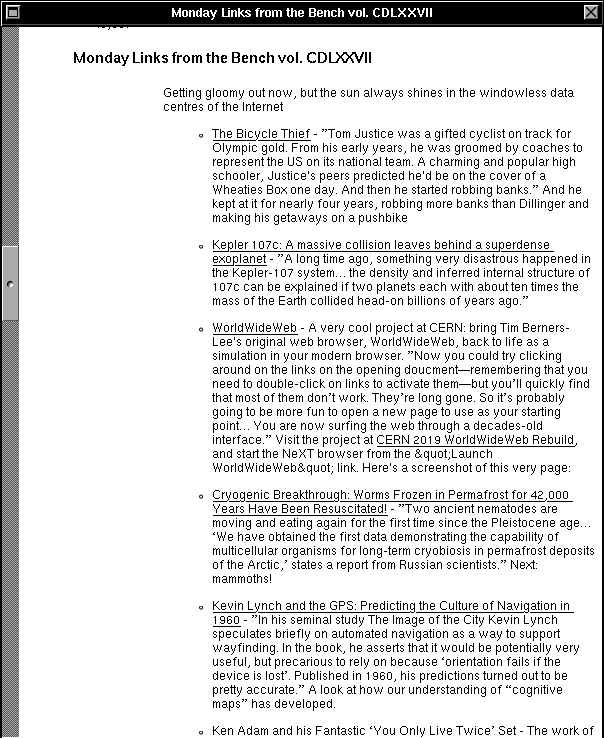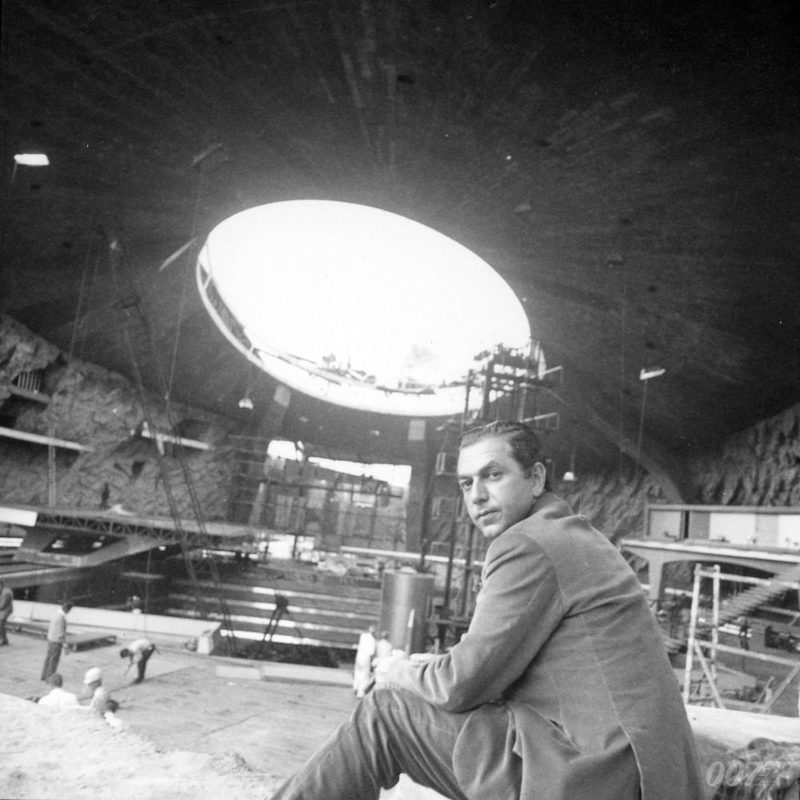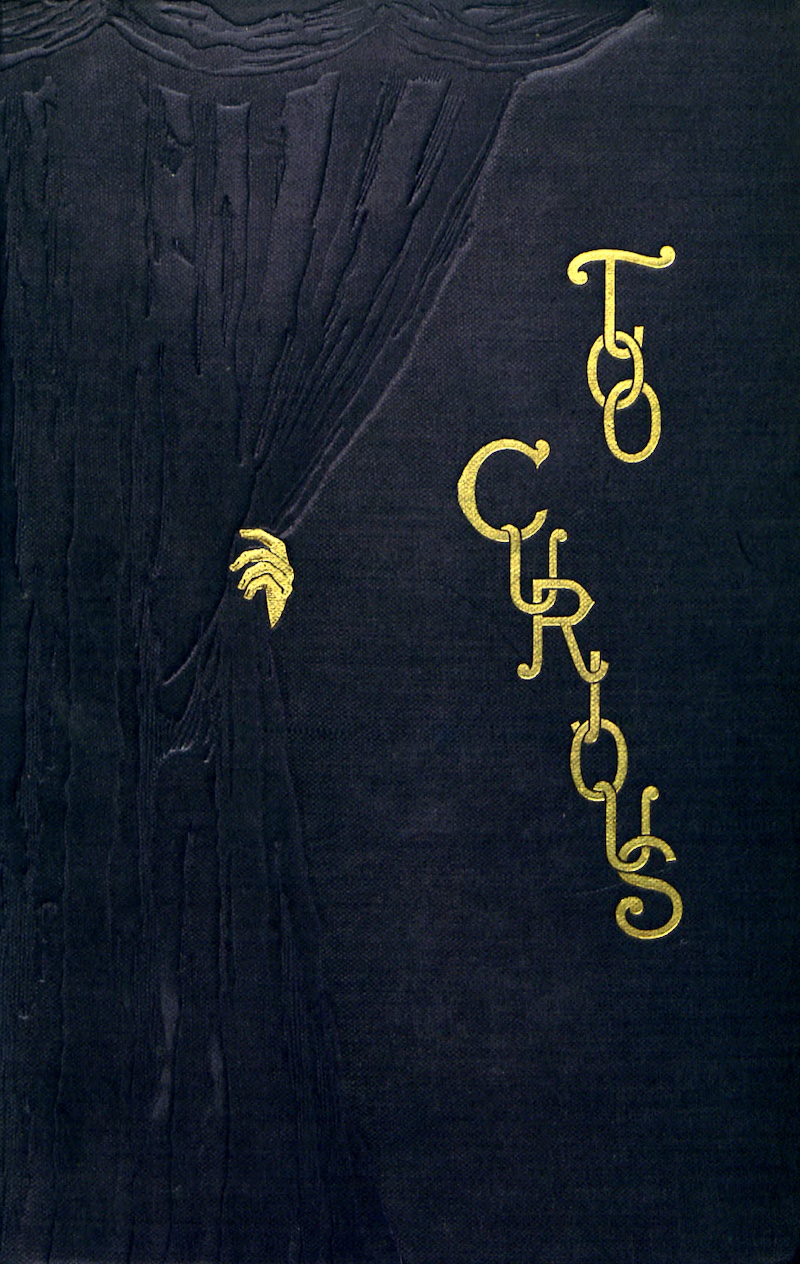
- The Bicycle Thief - ”Tom Justice was a gifted cyclist on track for Olympic gold. From his early years, he was groomed by coaches to represent the US on its national team. A charming and popular high schooler, Justice's peers predicted he'd be on the cover of a Wheaties Box one day. And then he started robbing banks.” And he kept at it for nearly four years, robbing more banks than Dillinger and making his getaways on a pushbike

- Kepler 107c: A massive collision leaves behind a superdense exoplanet - ”A long time ago, something very disastrous happened in the Kepler-107 system… the density and inferred internal structure of 107c can be explained if two planets each with about ten times the mass of the Earth collided head-on billions of years ago.”
- WorldWideWeb - A very cool project at CERN: bring Tim Berners-Lee's original web browser, WorldWideWeb, back to life as a simulation in your modern browser. ”Now you could try clicking around on the links on the opening doucment—remembering that you need to double-click on links to activate them—but you’ll quickly find that most of them don’t work. They’re long gone. So it’s probably going to be more fun to open a new page to use as your starting point… You are now surfing the web through a decades-old interface.” Visit the project at CERN 2019 WorldWideWeb Rebuild, and start the NeXT browser from the "Launch WorldWideWeb" link. Here's a screenshot of this very page:

- Cryogenic Breakthrough: Worms Frozen in Permafrost for 42,000 Years Have Been Resuscitated! - ”Two ancient nematodes are moving and eating again for the first time since the Pleistocene age… ‘We have obtained the first data demonstrating the capability of multicellular organisms for long-term cryobiosis in permafrost deposits of the Arctic,’ states a report from Russian scientists.” Next: mammoths!

- Kevin Lynch and the GPS: Predicting the Culture of Navigation in 1960 - ”In his seminal study The Image of the City Kevin Lynch speculates briefly on automated navigation as a way to support wayfinding. In the book, he asserts that it would be potentially very useful, but precarious to rely on because ‘orientation fails if the device is lost’. Published in 1960, his predictions turned out to be pretty accurate.” A look at how our understanding of “cognitive maps” has developed.
- Ken Adam and his Fantastic ‘You Only Live Twice’ Set - The work of film designer Sir Ken Adam, who as well as working on the early Bond films, also designed the car Chitty Chitty Bang Bang: ”If someone does a skyscraper, it’s very easy to calculate, but I come up with a sliding lake of fiberglass 120 feet up on an inclination that was held by one cable, and nobody quite knew if it was going to work. And I realize that if something goes wrong, I’ll never work in film again. I had a lot of nervous moments.”

- Scientists Are Totally Rethinking Animal Cognition - ”In the West, consciousness was long thought to be a divine gift bestowed solely on humans… There now appears to exist, alongside the human world, a whole universe of vivid animal experience.”
- Mysterious Quantum Rule Reconstructed From Scratch - The idea that makes quantum theory seem nonsensical turns out to make sense: ”The Born rule, which connects the math of quantum theory to the outcomes of experiments, has been derived from simpler physical principles.”
- Interactive map plots your address over 750 million years of Earth's history - ”A new interactive map created by Ian Webster, curator of the internet's largest dinosaur database, places our planet's ever-shifting surface into stark relief. Using plate tectonics and paleogeographic maps by C.R. Scotese of the PALEOMAP Project, Webster's map can show you how the earth under your current address changed over the course of some 750 million years.” Turns out the East Midlands were near the South Pole about 500 million years ago. The interactive map itself is at http://dinosaurpictures.org/ancient-earth#0.
- The Art of Book Covers (1820–1914) - Beautiful Victorian books: ”The nineteenth century saw the book transform from a largely hand-made object to a mass-produced product… From the 1820s, with the rise of mechanical bookbinding, these leather covers of old gave way to new cloth coverings which, in addition to being inexpensive, were now also printable. A wide variety of cover printing techniques were employed over the decades: from embossing to gilt to multi-colour lithography.” I’d happily buy some of these just for the cover
 This is Edward J. Goodman’s Too Curious, pub. London; Guildford: Bentley & Son, 1888.
This is Edward J. Goodman’s Too Curious, pub. London; Guildford: Bentley & Son, 1888.

Happy invoicing!





